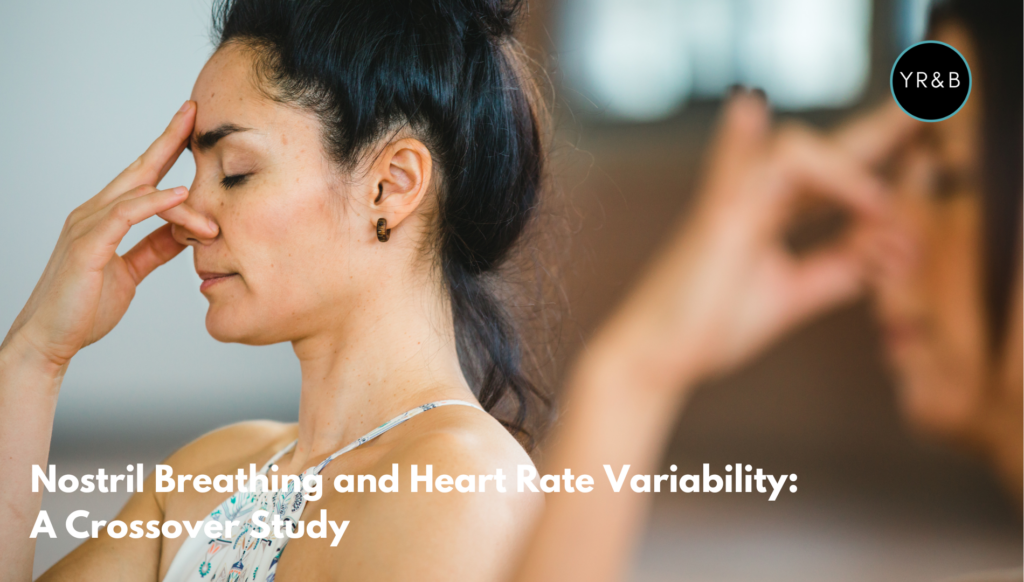What’s This Research About?
The study aimed to investigate how nostril breathing exercises affect heart rate variability (HRV), which is an indicator of the balance between the sympathetic (fight-or-flight) and parasympathetic (rest-and-digest) nervous systems. The goal was to see whether different breathing patterns could influence heart function and relaxation.
The researchers hypothesized that the two breathing practices would have different effects:
- Suryabhedan Pranayama (SBP – Right Nostril Breathing) would be activating and energizing.
- Chandrabhedan Pranayama (CBP – Left Nostril Breathing) would be calming and relaxing.

TITLE: Heart Rate Variability during Nostril-Regulated Yoga Breathing: A Randomized Crossover Study
PUBLICATION: International Journal of Yoga
DATE: December 2024
AUTHORS: Shirley Telles, Alok Singh, Sachin Kumar Sharma, Acharya Balkrishna
Heart Rate Variability (HRV) : a measure of the variation in time between consecutive heartbeats. It reflects the heart’s ability to adapt to changes by varying the time interval between beats, even when the heart rate appears relatively steady. These intervals are often measured in milliseconds and are influenced by the autonomic nervous system (ANS), specifically:
- Sympathetic Nervous System (SNS) – Activates the “fight or flight” response, increasing heart rate.
- Parasympathetic Nervous System (PNS) – Activates the “rest and digest” response, slowing heart rate.
Why is HRV Important?
HRV is considered a valuable indicator of:
- Autonomic Nervous System Balance: High HRV generally indicates a healthy balance between sympathetic and parasympathetic functions, while low HRV suggests a dominance of the sympathetic system, often linked to stress or overtraining.
- Physical Fitness and Recovery: Athletes and fitness enthusiasts use HRV to monitor their recovery status. A high HRV usually means the body is well-rested and ready for physical activity, while low HRV indicates stress or fatigue.
- Stress and Mental Health: Lower HRV is associated with higher stress levels and can indicate poor emotional regulation or anxiety. Higher HRV is linked to better emotional well-being and resilience.
- Cardiovascular Health: Low HRV is associated with an increased risk of cardiovascular diseases.
Random Crossover Design: a type of experimental study design used to compare the effects of different treatments or interventions within the same group of participants. It is commonly used in clinical trials and research studies to reduce variability and improve the reliability of results. Each participant receives all treatments or interventions, but in a different order. For example, in this study, participants performed four breathing practices (SBP, CBP, BAW, QR) on separate days, but the order was randomized.

